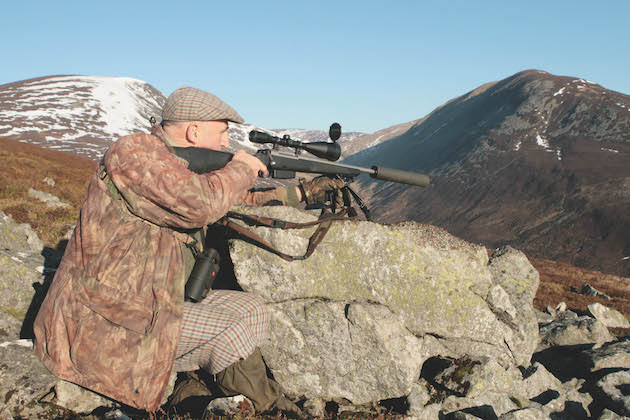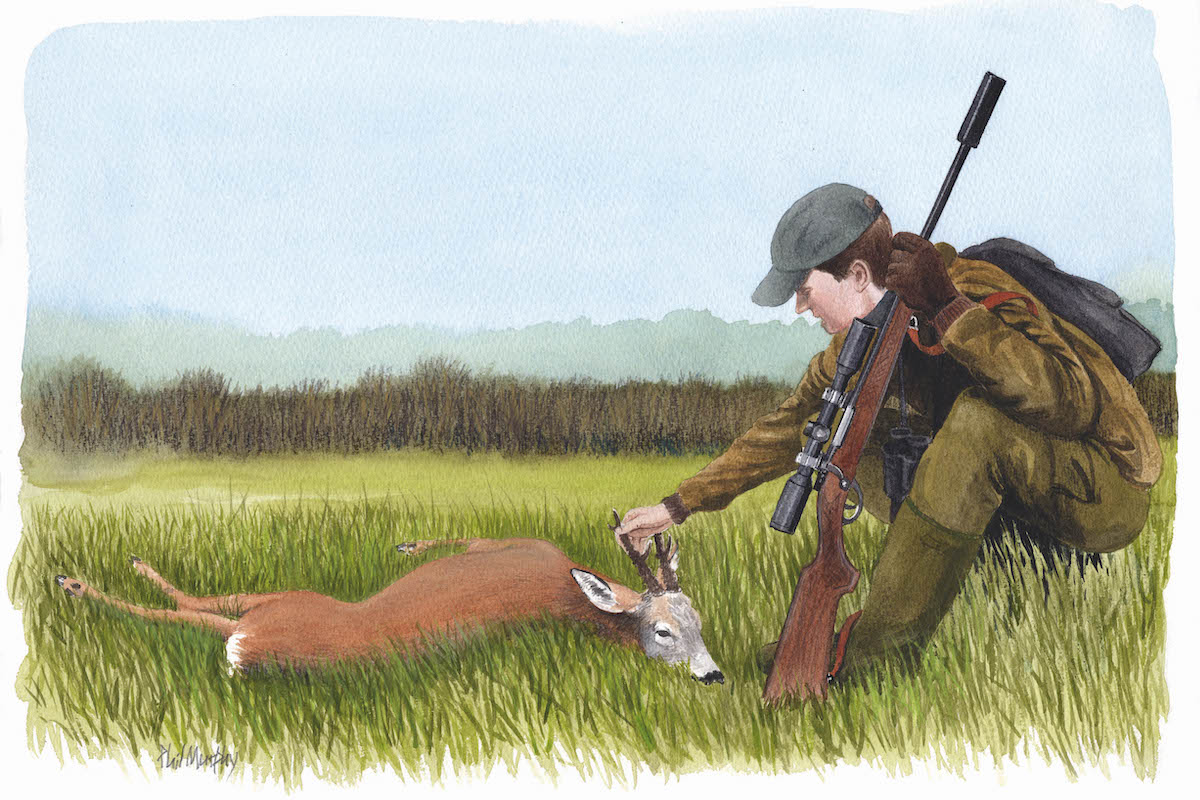Are these the best places to go stalking in Scotland?
Scotland is home to the finest stalking in the world and Alasdair Mitchell chooses the best places everyone ought to visit at least once in an article for Shooting Times

Stalking Blair Atholl estate.
I have to admit that I haven’t shot a red stag for years. These days, I tend to stalk hinds, for budgetary reasons. Yet money is a renewable resource, whereas time is not, so perhaps I should go to the hill for a stag while I still can. But if so, where are the best places for stalking in Scotland?

1.Forest of Atholl
The Forest of Atholl, in Highland Perthshire, would certainly be on my list. This is an ancient deer forest — and here I use ‘forest’ in its original sense of a hunting preserve, rather than woodland. It has long been popular with royalty. Queen Mary attended a driven hunt at Atholl in 1563 that accounted for 360 deer and five wolves.
Even today, the estate is huge, covering 145,000 acres, with 80,000 acres of open hill. The sheer scale of Atholl is reflected in an annual cull of 320 stags and 950 hinds. There are five main beats — each a forest in its own right: Forest Lodge, West Hand, Dalnamein, Glen Bruar and Clunes.
I have stalked on all of them and can vouch for the universally high quality of the estate staff. Ponies are used on all Atholl beats except Clunes, where the ground is soft. If I had to make a choice based on scenery, I think I would pick the Forest Lodge beat.
The style of stalking deer on the open hill with a rifle that we use to this day was first described in detail by one William Scrope, based on his exploits on Atholl. His book, The Art of Deerstalking, was published in 1838 and helped spur the Victorian craze for the sport.
To this day, Atholl is a special place. Once, while stalking there, I saw four golden eagles in the air at the same time. Where else could that happen?

Stalking on the Blair Atholl estate in Scotland
2. Black Mount Estate
Also on my list is Black Mount, in Argyllshire. This is another ancient forest, known in the 16th century as the Forest of Coireach a’ Ba. The current Black Mount Estate has more than 62,000 acres of deer forest. It has the unique distinction of including, on its northern fringe, a ski area — Glencoe Mountain Resort. The ski tows run up Meall a’ Bhuiridh — Gaelic for “hill of the roaring stag”.
I have never stalked on Black Mount, but I have walked there out of season. The scenery is sweeping and dramatic, made all the more fascinating if you trace the footsteps of the Marchioness of Breadalbane.
A tough and accomplished hill stalker, she wrote of her love for the place in The High Tops of Black Mount (1907).
I hiked up to the rocky pass called Lairig Dochard, which featured in Edwin Landseer’s 1847 painting, The Deer Drive. What a setting for a stalk that would be. (For a description on what the points on a stag antlers are called, read here.)

The Highlands of Scotland teem with scenic sporting estates
3. Letterewe Estate
Further north, in Wester Ross, lies another estate on my bucket list: Letterewe. Again, I have never stalked there. Letterewe itself covers 43,000 acres, but sits within a total of more than 86,000 acres under the same ownership. Under the stewardship of the Van Vlissingen family, Letterewe is said to endorse enlightened community and environmental policies, as well as offering traditional deer stalking amid some of the most impressive scenery the West Highlands can offer.
The main Letterewe lodge, reached by estate launch across Loch Maree, is very plush and wonderfully situated. More suited to me is a much smaller, rather basic lodge called Carnmore, which is accessed by boat over Fionn Loch. There is no road to Carnmore, which is off-grid and one of the most remote houses in the UK.

The Prince of Wales at a deer drive in the Forest of Mar (coloured engraving) by English School, (19th century)
4. Knoydart
Where else? There are so many deer forests, so little time. What about the remote Knoydart peninsula in the West Highlands? In his great tome, The Deerstalking Grounds of Great Britain and Ireland, Kenneth Whitehead wrote: “Knoydart Forest, sea-girt on three sides by a coast extending some 30 miles, is one of the wildest and finest deer forests in the whole of Scotland.” That was published in 1960. Today, Knoydart is split into three landholdings: one owned by a conservation body, another by the local community and the third by a private landowner. Recreational stalking is offered by the last two. I may have to see for myself.

The Highlands
Why are the best places for stalking in Scotland?
You are crawling on your belly, sliding around each tussock of deergrass and into every peaty hollow, keeping your head down. An observer might think you were fearful of being raked with gunfire at any moment. Beneath your pounding chest you can hear — and feel, even — the glug and gurgle of subterranean rivulets, the very lifeblood of the mountain.
A hoarse, guttural roar splits the October mist, sounding unnervingly close. It is answered by a stentorian challenger. It is as though you are caught in the middle of an impending battle. The stags snort and bellow, unaware of your presence. Silken-eared hinds dance and prance, their keen eyes and noses ready to betray you in an instant.
If the rampant sound and fury doesn’t set your pulse racing, nothing else will. Such is stalking for red stags in the Highlands of Scotland during the peak of the rut.
It is a unique type of hunting that fascinated intrepid Victorians and sparked a fashion for renting immense, largely treeless ‘deer forests’. The wild red deer, which had once been ousted in favour of sheep, returned to the land once the North Country Cheviots had gone. But the people did not. There is a hint of melancholy about the beautiful yet lonely landscape.
Stalking red stags on the open hill in the time-honoured manner is an exercise in time travel. You can be a Victorian for a week, before returning to humdrum modern life with its conveniences and worries. Until next season.
If you simply wish to shoot a very big stag, there are easier, more certain ways of doing so. Yet hunting a ponderous, multi-pointed park stag does not appeal to me. Nor do those gigantic European woodland reds, worthy as their pursuit may be. New Zealand looks wonderful, but why fly to the far side of the world to hunt an imported species?
No, it’s got to be a graceful, hard-living Scottish hill stag, spied, stalked and retrieved the traditional way. I crave memories forged from hard hunting in a land of crags and mighty hills, lit by the blazing autumnal tints of birch and rowan among the rocks and waterfalls. A dusting of early snow on the high tops would literally be the icing on the landscape. If there are gnarled remnants of ancient Caledonian forest, so much the better. Oh, and there should be eagles.
Ideally, the slain beast would be carried off the hill by a kind-eyed Highland pony, or garron, using a deer saddle made 100 years ago. There are other key ingredients: a stupendous bath of hot, peaty water at the end of the day; the companionship of old friends; wholesome food and honest ale; a faithful dog sprawled before the fire, while tales are told and retold… is this too much to ask? Maybe not.
You’ll find a guide to British deer species here.








